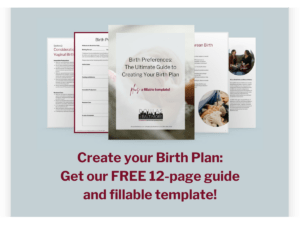Be it for work trips or baby moons, flying during pregnancy presents a whole new world of details to consider. Walking through security and radiation exposure, the risk for increased swelling, and remaining well hydrated, are all concerns for pregnant people who use air travel at any stage of pregnancy. Here are some specific tips and additional things to consider before you plan and pack.
Flying during pregnancy and the TSA:
If you have concerns about going through TSA’s security scanners because of exposure to x-rays, we’ve got good news. Their scanners do not use x-ray, but instead, use non-ionizing electromagnetic waves that get reflected off the body. They are considered perfectly safe for all passengers. However, you can still opt out of the scanner, and ask for a pat down instead. A female TSA agent will perform the search, and you can continue to your gate.
Also, you can ask for as much help for lifting, and getting through the line as you need. No one is labeling you a person in distress. Instead, how about a savvy flyer who knows what resources are available for use!
1st Trimester
Compression stockings/socks: can help reduce swelling of your lower extremities, and promote blood flow.
Nausea remedies: The change in elevation may cause internal gasses to expand, making your tummy even more vulnerable to sickness. Try having easy to digest foods, like crackers, available in your carry on to nibble throughout the flight. Some find relief from peppermint or ginger candies.
Radiation Exposure: there is some evidence that extreme exposure to radiation between the 8th and 15th week of pregnancy may affect IQ, but the level of inflight radiation is low. There is little risk for the average traveler, but it is something to be aware.
No one will feel bad for you: One of the hardest parts is the lack of empathy you will garner from most people. You will be tired, and everything will feel harder, and most people do not have external signs they are expecting.
2nd Trimester
In the second trimester, most are generally feeling better than they were in the 1st trimester, with more energy restored. At the beginning of your 2nd trimester, you may still not have any noticeable physical changes, whereas when you finish the 2nd trimester, you will most likely have grown considerably. See compression socks above.
Snacks: While you may start to feel less nauseous, you will want to continue to carry snacks and water.
Getting up and moving while in flight will help with overall discomfort in your back, hips, and legs. If you are not permitted to stand or walk, try to stretch as best you can.
Airline Policy: Some more significant things to consider are your airline’s policies on traveling while pregnant, and possibly restricting yourself on destinations. Most pregnancies are considered viable after 24 weeks, so in the event of an unplanned birth, consider if the place you will travel to have the medical resources to support you and your babe until you are well enough to go home.
3rd Trimester
Check with Your Doctor: With all air travel, talking with your doctor is recommended, but in the 3rd trimester, it is especially important. Most physicians discuss limiting air travel at week 36, but your specific pregnancy may have particular needs. If you are traveling between weeks 28- 36, be ready for lots of restroom breaks, low back pain, and fatigue creeping back in. To help with all that:
Bring a pillow: Not a neck pillow. A real pillow. Having the ability to support your body in various ways on flights may seem like a luxury. If you can have get an aisle seat (even better if there is extra leg room), we recommend it. You won’t have to maneuver around as many for your trips to the restroom, and if the seatbelt sign goes off, merely standing and swaying will be a comfort.
Travel Insurance: Consider getting travel insurance during pregnancy. In the event you need to get home quickly you can make arrangements without the additional pain of a hefty bill, or make cancellations should they be necessary.
Panty liners: it may have happened before the 3rd trimester, but you may be surprised by a small release of urine when you cough or sneeze. The pressure your bladder and pelvic floor are under in the 3rd trimester make minor incontinence a very common occurrence. Having extra protection is much more comfortable than needing to bring a complete change of clothes.
Whatever trimester you are in, you can stay safer and more comfortable while flying during pregnancy!


